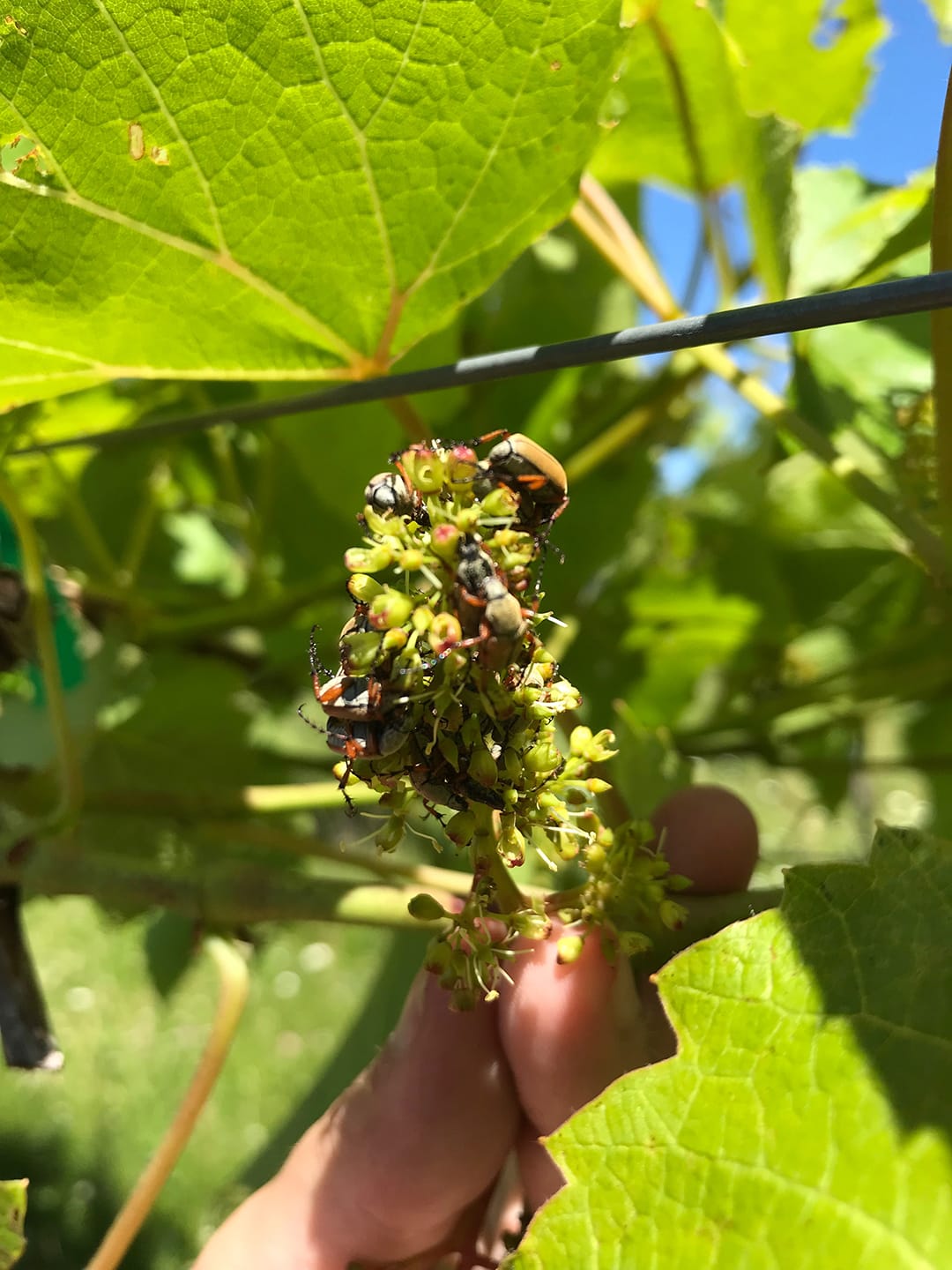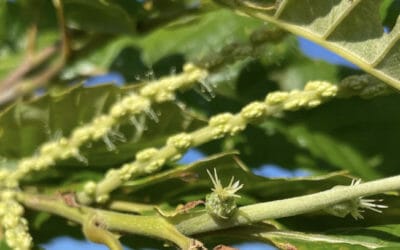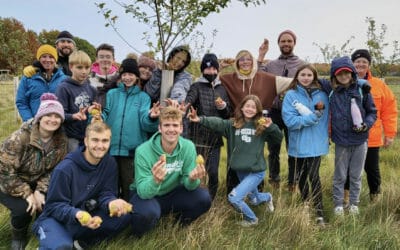by Izzy and Alex Krantz, Gathering Ground Interns
As we reflect on the past five weeks of the Gathering Ground internship, the smell of dead Rose Chafers composting in the sun haunts us. We close our eyes and see thousands of brown beetles swarming around us, clinging to our clothes and nestling in the grape vines, skeletonizing the leaves.
Having come from the suburbs of Chicago where “pests” are usually cute and fluffy (like squirrels and bunnies), neither of us had ever even heard of Rose Chafers. We knew farming wouldn’t be easy, but this – this was war.

How do you get rid of a species that thrives in the exact same sandy soil in which your grapes thrive, and how do you do it without standard conventional controls, such as carbaryl based pesticides? These are the questions Russell and Alessandra Rolffs have been trying to solve for the past two years.
In 2019, they used BeetleGone!, a bio-insecticide which unfortunately did not work. They did not have the tractor that they have now, so even the most promising insecticides would most likely be less effective since they couldn’t spray as regularly. Thus, in the rivalry of man versus bug, rose chafers dominated the year of 2019.
In June of 2020, they were ready and armed with new ideas such as tilling half of the vineyard to disturb rose chafer pupae and hopefully prevent them from even hatching. Disturbing the soil in between the vines was a noble effort that would get rid of many rose chafers, but there were still thousands to come.
So they hatched and executed other strategies such as spraying Surround (a kaolin clay that acted as a physical barrier between the bugs and the leaves and blossoms), and Azera (a neem and pyrethrum mix which kills on contact) on the vineyard. Russell sprayed this mix in evening and night to ensure that no bees or beneficial pollinators were out on the vines. By this time, they had a tractor which aided in spraying more consistently and effectively. When we began the internship, we were able to witness rose chafer populations dwindling by examining the vineyard rows before and after a spray. The results were visibly clear – we were finally turning tables.
Our last method consisted of mass traps, constructed from white buckets with lids and special funnels with rose chafer lures purchased from Great Lakes IPM. After much observation, we realized the rose chafers seemed to be flying in from the Northwest, and the East. With this in mind, we dispersed the buckets on these two main fronts in the hopes of making a sort of pest barricade. At the beginning of each day we’d check the buckets (we put soapy water in them to drown the beetles) and would dump the dead rose chafers into the compost bin, fueling the circle of life. (Dead beetles make great compost which in turn, helps improve the soil, thereby aiding plant growth).
We spent quite a bit of time on the offense as well, picking and shaking rose chafers off of grape vines into soapy water, but the lures proved to be a less labor intensive route.
On top of everything, we didn’t prune the north vineyard in the hopes that the Rose Chafers would have enough grapes there, and not have to venture to the south vineyard. In all honesty, we were expecting the north vineyard to be a sort of sacrificial crop, but we ended up seeing loads of fruit on the vines!
Much of this was trial and error, sweat and sunburns; all in all, using our 2020 methods helped knock back the Rose Chafers enough so that we can actually have a crop of grapes this year. We’re excited and relieved to be past the four-week-rose-chafer plague, and feel much more confident in preventing and combating them for next year. Until then, the harvest is plenty!




0 Comments